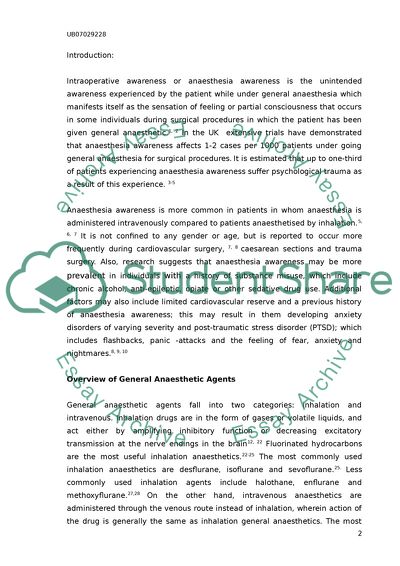Cite this document
(Intraoperative Awareness Case Study Example | Topics and Well Written Essays - 1500 words, n.d.)
Intraoperative Awareness Case Study Example | Topics and Well Written Essays - 1500 words. https://studentshare.org/health-sciences-medicine/1746857-anaesthesia-awareness-mechanism-and-management
Intraoperative Awareness Case Study Example | Topics and Well Written Essays - 1500 words. https://studentshare.org/health-sciences-medicine/1746857-anaesthesia-awareness-mechanism-and-management
(Intraoperative Awareness Case Study Example | Topics and Well Written Essays - 1500 Words)
Intraoperative Awareness Case Study Example | Topics and Well Written Essays - 1500 Words. https://studentshare.org/health-sciences-medicine/1746857-anaesthesia-awareness-mechanism-and-management.
Intraoperative Awareness Case Study Example | Topics and Well Written Essays - 1500 Words. https://studentshare.org/health-sciences-medicine/1746857-anaesthesia-awareness-mechanism-and-management.
“Intraoperative Awareness Case Study Example | Topics and Well Written Essays - 1500 Words”. https://studentshare.org/health-sciences-medicine/1746857-anaesthesia-awareness-mechanism-and-management.


